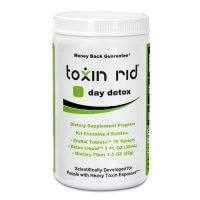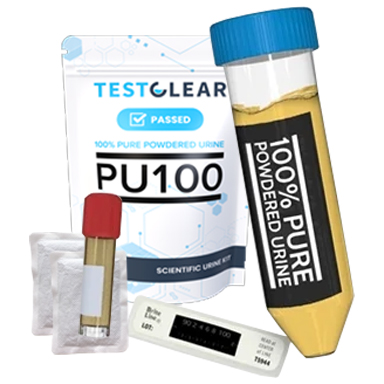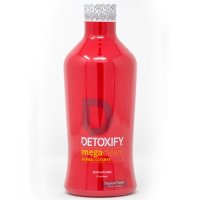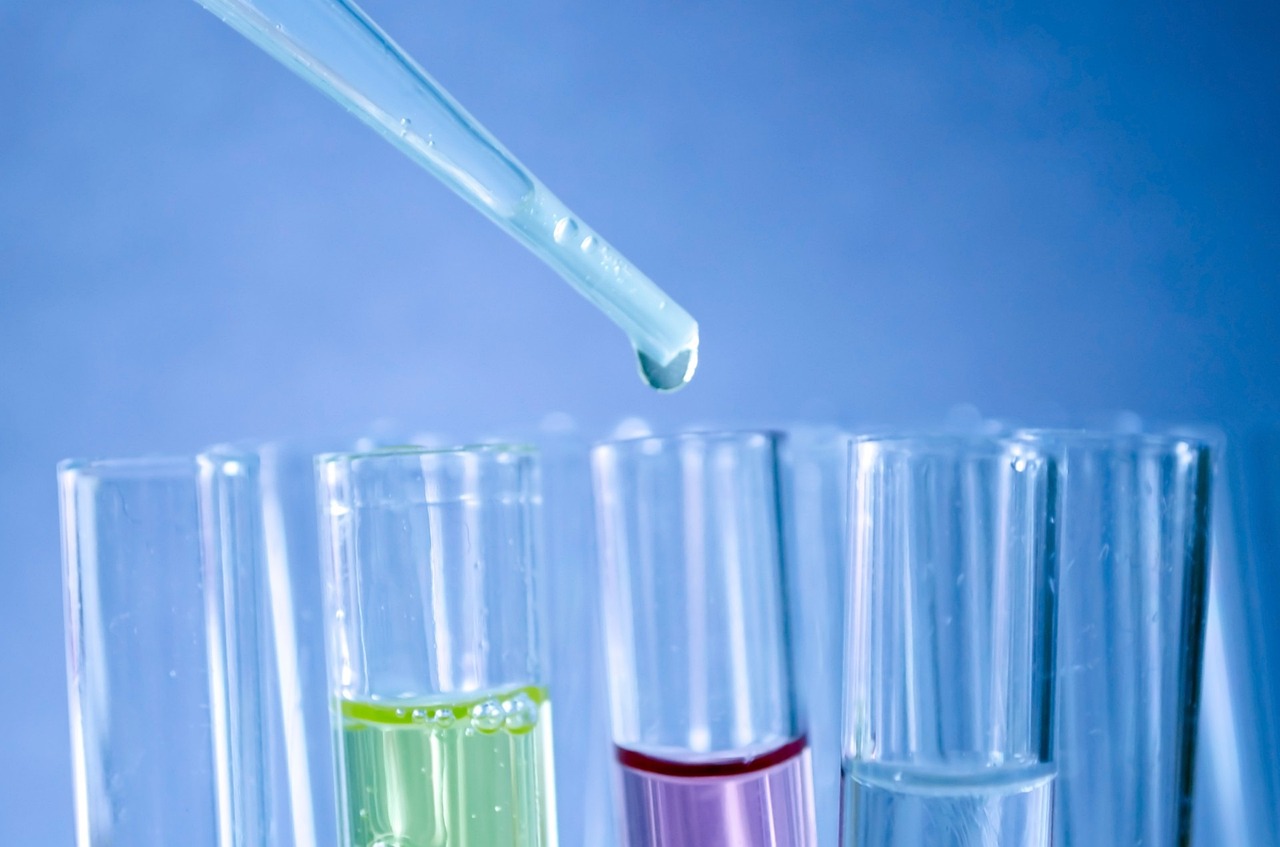A 4-panel drug test is a popular drug screening procedure, used for screening for drug metabolites in the body. Given that federal and state regulations have different approaches to the application and enforcement of drug testing policies, employers are often responsible for maintaining a drug-free workplace.
Prescription drug abuse is on the rise and can threaten the lives of users at work, as well as other workers by resulting in cognitive impairment, hampering the functionality of the users. As a result of frequent accidents that may arise from drug abuse, other workers may file claims for compensation for injuries experienced while doing their jobs, leading to extra costs incurred by employers.
4-panel drug tests are essential for ensuring safety in roles involving heavy machinery and commercial vehicles. To increase their chances of successfully passing these tests, people often consider using Toxin Rid pills. These pills aid in detoxification by removing toxins and drug metabolites from your system. Proper usage, combined with a healthy lifestyle, can optimize results.
 |
#1 THC Detox Pills
Toxin Rid Pills |
|
|
 |
Urine Simulation Kit (Powdered Human Urine+Heater) |
|
|
 |
Mega Clean Drink + PreCleanse Pills |
|
Contrary to what many people believe, most people who are struggling with addiction continue to work. Binge drinkers make up the majority of illicit drug users — more than 70% of whom are employed. Furthermore, the two illegal drugs that are most commonly used at work are cocaine and marijuana, and 16% of employees suffer from a substance use disorder.
What is a DOT Drug Test and when is it carried out?
The Department of Transportation (DOT) conducts a 4-panel drug test for employment on all employees who work for companies that are subjected to its regulations and who are in positions where safety is an issue. These tests must be completed prior to resuming work, periodically throughout the employment time, and in reaction to certain incidences that may occur while working.
What Does a DOT 4-Panel Drug Test For?
Under DOT regulations, DOT drug tests must screen for the following substances to detect whether an applicant or employee has recently used one or more of them:
-
Marijuana
Cannabinoid is also being tested for and it is the major component of marijuana (THC). Cannabinoids, including THC, are central nervous system stimulants that affect mood and sensory perceptions, cause loss of coordination, impair short-term memory, and cause symptoms of anxiety, paranoia, disorientation, hallucination, and elevated heart rate. THC is excreted primarily in the urine.
When considering the potential effects and duration of cannabinoid use, it is important to know about THC detox methods, such as Toxin Rid pills or Detoxify Mega Clean, and their impact on the elimination of this psychoactive compound from the body. For more information about THC detox, you can refer to this informative guide at https://www.mercurynews.com/2022/12/01/thc-detox-guide-and-best-ways-to-get-weed-out-of-system.
-
Amphetamines
The most widely used artificial derivative drugs. Large doses of this powerful sympathomimetic stimulant cause heightened stimulation of the central nervous system, and cause euphoria, alertness, reduced hunger, and a feeling of increased energy and power.
-
Morphine
The main and most potent opium alkaloid, Morphine (MOR), is another substance being tested for. It’s an opioid analgesic and reduces pain by slowing down the central nervous system. The main therapeutic use of the potent narcotic analgesic morphine is the treatment of moderately severe to severe pain.
-
Cocaine
The fourth drug being tested for in a 4-panel drug test is cocaine (COC). Cocaine functions as both a powerful local anesthetic and a central nervous system stimulant. One of the psychological effects of cocaine is euphoria, which is associated with increased heart rate, dilated pupils, and perspiration.
The following safety-sensitive employees and job applicants must undergo mandatory DOT drug tests. In certain cases, individuals may need to use products like Toxin Rid to aid in the detoxification process, ensuring compliance with Department of Transportation regulations and maintaining a drug-free work environment.
- Air traffic controllers
- Aircraft dispatchers
- Flight crew members
- Pilots
- Bus drivers
- Truck drivers
- Flight attendants
- Emergency responders
- Maintenance workers
- Train conductors
- Train operators
DOT drug tests are required in the following circumstances:
1. Pre-Employment Drug Tests
All applicants for positions requiring a high level of safety must submit to pre-employment DOT drug testing before starting work. Their conditional job offers will be canceled if they test positive for drugs prior to employment.
2. Post-Accident Drug Tests
The following situations will necessitate post-accident drug testing:
- Fatal accidents whether or not the driver was cited
- Accidents involving injuries where the motorist received a ticket and needed emergency medical care
- Accidents with merely property damage in which the driver received a ticket and needed towing.
3. Random Drug Testing
Drivers who are employed by companies subject to substance regulation often find themselves subject to annual random drug testing. To navigate this stringent requirement, many individuals, including owner-operators, employ various detox methods to ensure their compliance with the testing protocols. Some popular approaches include the use of Toxin Rid pills and Detoxify Mega Clean, both of which are designed to help individuals eliminate toxins from their systems and pass drug tests.
4. Reasonable Suspicion Drug Testing
Employees in positions where employee safety is at risk who are suspected of using drugs or alcohol must submit to reasonable suspicion drug testing by regulated companies.
They must privately share their concerns with the employee before sending them off for testing. They must either drive them or arrange for the test to be given there. They should not permit the employee to take the test on their own.
5. Return-to-Duty Drug Testing
Employees who have refused a drug test or provided a positive result must go through the return-to-duty procedure before they may be put back to work in a position that requires a high level of safety. To the satisfaction of a substance addiction specialist who has been approved by the DOT, the employee must successfully complete an alcohol and drug education and treatment program. Before being allowed to return to their job, the individual must submit a negative result.
6. Follow-up Drug Testing
In the first 12 months after being reinstated to work following an RTD (Return to Duty) test, employees must undergo at least six follow-up drug tests. Additional follow-up tests may be required if there are concerns or suspicions regarding drug use during this period. To pass these tests and maintain their drug-free status, employees often resort to detoxification methods such as Toxin Rid or use Powdered Urine for this test, as they allow them to pass the test and keep their reputation clean.
 |
#1 Choice in 2024
Toxin Rid |
|
|
 |
Urine Simulation Kit |
|
All about Non-DOT drug test
Non-DOT tests are performed to identify drug or alcohol use without following the DOT’s guidelines. They are well-liked by employers because they can offer stronger regulations and standards than those required by the DOT.
In order to detect whether the sample contains any illegal substances, Non-DOT testing typically look for a number of compounds, including marijuana, cocaine, amphetamines, opiates, and phencyclidine. It is understandable why non-DOT testing is still one of the most widely used strategies for reducing workplace drug intolerance since it gives companies more comfort regarding safety and health regulations within their organization.
Who is required to undergo Non-Dot drug testing?
Employees who are not in the transportation industry, such as those in the energy, oil and gas, commercial trucking, and construction industries, must frequently undertake non-DOT drug tests. Depending on their requirements, employers may decide to use Non-DOT drug testing solely. Since they can identify both legal and illegal substances, urine Non-DOT drug tests are the most used type of Non-DOT drug test.
When is a Non-DOT drug test conducted?
Non-DOT drug tests are different from regular DOT tests in terms of timing, substances detected, and noncompliance tracking. If a potential safety issue at work is felt by the employer, tests may be administered beforehand or at random. To prevent cases of drug usage while on the job, non-DOT drug tests are also conducted following an accident. Employers can guarantee that the workplace is secure for both workers and consumers by using a Non-DOT drug test.
Multi-Panel Drug Tests
Every drug test generally follows the same process, with each panel testing a certain number of drugs. As an illustration, a 5-panel drug test tests for 5 substances, whereas a 12-panel test looks for 12 drugs.
Since it checks for the five drugs that are most frequently abused: marijuana, cocaine, opiates, PCP, and amphetamines/methamphetamines, the standard 5-panel drug screening urine test is the most widely used and is frequently employed by both private businesses and governmental organizations. The majority of workplace drug screens employ the 5-panel drug test because it is the national standard for workplace drug testing.
Compared to the 5-Panel Drug Test, the 4-Panel Drug Test is less common but widely used for its quick and affordable results on popular illicit drugs, typically delivered within five minutes. Both DOT and Non-DOT drug tests employ the 4-panel method. For individuals preparing for such tests, it’s important to be aware of the substances detected and consider appropriate detox methods, such as Toxin Rid pills or Detoxify Mega Clean. Consult a healthcare professional or substance abuse counselor for tailored advice.

Types of 4-Panel Drug Test
4-Panel Urine Drug Testing
The most used testing method is urine testing. It offers a wider window of detection (usually 24-72 hours) for the majority of drugs.
Properties of Urine 4-panel drug test:
- It enables you to work with a preliminary result.
- It has the most testing options and is still the most often used method of drug testing.
- Has the capacity to perform tests for both prescription and illegal drugs
Window of Detection:
Because it might take up to 6–12 hours for a drug to start breaking down in the body, very recent drug usage may go undetected. Compared to an oral fluid drug test, this test has a wider window of detection.
Testing Method
Urine drug tests often utilize the immunoassay method for its speed and accuracy in detecting various substances and drug metabolites. such as Toxin Rid and Detoxify Mega Clean are popular detox products that can help individuals eliminate these metabolites and increase their chances of passing the test.
 |
#1 THC Detox Pills
Toxin Rid Pills |
|
|
 |
Urine Simulation Kit (Powdered Human Urine+Heater) |
|
|
 |
Mega Clean Drink + PreCleanse Pills |
|
Oral Fluid 4-Panel Drug Testing
While urine tests need the substance to have already been metabolized before they may detect it, oral fluid testing can identify recent drug usage. For situations like reasonable suspicion, post-accident, and others where it’s critical to find out if someone has recently used drugs, oral fluid testing is the perfect option.
The technique of collection is another advantage that oral fluid tests provide over urine-based tests. There is no need for separate facilities because the oral fluid collection is always observed, making it possible to conduct testing anywhere. All popular methods to cheat a urine drug test are eliminated by observed collections.
Window of Detection
Has a smaller window of detection than a urine drug test? The detection window for water-soluble drugs in oral fluid tests is between 24 and 36 hours. Nevertheless, this may change depending on the substance in question, how frequently it is used, and other elements.
Test method
Immunoassay screening is also used since it identifies numerous medications and drug metabolites in oral fluid. The test is completed in a matter of minutes, and the results are precise.
Instant Rapid 4-panel drug test?
Instant drug tests yield immediate results, indicating the presence or absence of drug substances, with results categorized as negative or non-negative. Officially confirming a positive result is not possible through instant testing. Instant tests, also known as “point of care testing” or “rapid tests,” commonly use saliva or urine samples. In some cases, individuals use products like Toxin Rid pills or Detoxify Mega Clean to detoxify their bodies and eliminate drug metabolites in preparation for drug tests, but it’s crucial to follow up with a lab test for official verification.
Lab-based 4-panel drug test
The specimen collected (urine or oral fluid) is forwarded to a lab for a more thorough screening for a lab-based test. As a result, it typically takes longer (2–3 days) to obtain the results. Any substance can be screened for in a lab setting. The organization seeking the test would have chosen the drug panel to be used before testing. So, if a custom panel containing a different drug—let’s say, fentanyl—was required, this would have been disclosed prior to the test.
Accuracy of instant rapid and lab-based testing
Drug tests conducted in a lab are more reliable. In medicolegal instances, they are more thorough, involved, and defendable, all of which are factors that specific organizations must consider, especially in highly regulated industries like the DOT. Rapid testing, however, lacks all of these protocols. Its primary goals are expediency and the straightforward reporting of a “negative” or “non-negative” result.
4 Panel Drug Test DOA-144
One of the most often used on-site urine drug testing kits available is this 4-panel drug test card. This four-panel urine drug test kit provides results for the most popular illegal substances in less than five minutes, making it a quick and affordable way to gather information.
What can be detected in a urine test?
Tests for 4 drugs:
- Cocaine
- Marijuana
- Methamphetamines
- Opiates
It is:
- 99% Accurate
- Has excellent Shelf Life
- Goes for $72.50
When purchasing DOA-144,
- There’s FREE Shipping for orders of $50.00 or more
- Also, there are FREE Collection Cups and Temperature Strips on orders of 25 test or more.
4-Panel Drug Tests procedure
In order to assess the presence of drug metabolites in a sample of human urine, the four-panel drug test relies on an immunochemical response between antibodies and antigens. Drug conjugate binding to the antibody is prevented when the amount of drug present is equal to or more than the cut-off. Because of this, a positive urine sample on a 4-panel drug test won’t have a colored band on the test line zone, indicating a positive result, whereas the presence of a colored band denotes a negative result. The test window has a control line that serves as a procedural control.
Cut-off levels for 4-Panel Drug Tests
What are drug test cutoff levels?
Cutoff levels are used in drug testing to find out whether a sample test positive or negative for the usage of a particular drug by detecting the presence of the drug and its metabolites. However, sometimes people preparing to take a test use products such as Toxin Rid pills or Detoxify Mega Clean to hide the presence of these metabolites in their system.For testing of oral fluids and urine, cutoff levels are stated in nanograms (ng) per milliliter (mL) or in picograms (pg) per milligram (mg) for testing of hair.
Urine drug test Cutoff levels
| Drug | Cutoff levels | Confirmation Cutoffs |
| Cocaine | 150ng/mL | 100ng/mL |
| Methamphetamine | 500ng/mL | 250ng/mL |
| Morphine | 2000ng/mL | 2000ng/mL |
| Marijuana | 50ng/mL | 15ng/mL |
Oral fluid drug test Cutoff levels
| Drug | Cutoffs levels | Confirmation Cutoffs |
| Cocaine | 15ng/mL | 6ng/mL |
| Methamphetamine | 150ng/mL | 120ng/mL |
| Morphine | 30ng/mL | 30ng/mL |
| Marijuana | 3ng/mL | 1.5ng/mL |
Windows of Detection for Urine Drug Testing
The detection window is the precise period of time when a urinalysis can determine whether drugs are present in the body. A urinalysis may not pick up drug use after the typical 2 to 3 days window of detection for most substances. The substance’s solubility in fat and usage frequency, among other factors, have an impact on the window of detection.
Below is the window of detection period for a 4-panel urine drug test:
- Methamphetamine – 2 to 5 days
- Cocaine – 2 to 3 days
- Morphine – 2 to 5 days
- Marijuana – 2 to 4 days
- PCP – 5 to 6 days
Oral fluid saliva drug test detection time
When compared to the detection time in a urine drug test, oral saliva drug test detection time is usually faster. As an excellent indicator of whether an employee is “under the influence of drugs at work,” this can be very helpful for employers. The clearance times are significantly influenced by the drug’s dose that is taken.
How Do You Read the Results of a Drug Test?
A positive test result indicates the presence of the targeted drug or its metabolites in the sample. According to federal regulations, the DOT drug test procedure consists of an initial screening phase and a confirmatory screening step. A medical review officer (MRO) confirms positive drug test findings after which they are communicated to the requesting company. While drug testing can provide positive or negative findings for substance use, you should consider the possibility that some prescription medicines could also yield such results, depending on the substances you test for. In order to avoid false-positive results from drug tests, it is crucial for candidates and workers to bring a list of their prescription medications.
A negative drug test result signifies that no drugs or their metabolites were found in the test subject’s sample. A test will be considered negative if it finds less than that minimal amount in a sample.
How to pass a 4-panel drug test?
Detox Drinks
When it comes to passing a urine drug test quickly and effectively,detox drink stands out as an excellent option. One of the best is Detoxify Mega Clean. This marijuana detox drink is specially formulated to assist individuals in achieving their goal of lowering the concentration of tetrahydrocannabinol (THC) metabolites in their body to levels below 50 mg per. By promoting increased urination, its aids in the elimination of these metabolites, making it one of the most potent natural methods to successfully pass a urine drug test within a 24-hour timeframe.
 |
#1 THC Detox Pills
Toxin Rid Pills |
|
|
 |
Urine Simulation Kit (Powdered Human Urine+Heater) |
|
|
 |
Mega Clean Drink + PreCleanse Pills |
|
Detox Kits
Dietary fibers, drinks, and detox medications are all included in detox kits. Urine drug test kits like the Toxin Rid Detox Kit contain such natural ingredients. These effectively eliminate Tetrahydrocannabinol from the body. A quality kit will guarantee that THC is absent in the urine sample while maintaining the integrity of other indicators.
Lemon Juice
It is among the most effective at-home traditional recipes for detoxification that many marijuana users employ. It’s prepared by adding slices of lemon to about 8 to 16 ounces of water. You can prepare for a drug test by drinking a beverage, which can remove toxins from the body.
Cranberry Juice
Cranberry juice consumption is another strategy for avoiding a positive drug test. When it comes to THC detox, it is one of the most suggested options. However, be sure you don’t have a cranberry allergy and only drink a minimal amount of the juice.
Drink Enough Water
You may remove toxins from your body by drinking a lot of water. Although it won’t hasten the detoxification process, consuming up to 3 liters of water every day will keep you hydrated as your body rids itself of toxins.
Exercise Regularly
Regular exercise will increase your metabolism, help you lose weight, and hasten the process of detoxifying. Fat cells serve as storage for toxins. Therefore, exercise is an essential part of detoxification. Exercise can help you transition from cannabis use more easily by lowering traces of toxic substances that can be detected in your body.
Maintain a Healthy Diet
When detoxing, be cautious to stay away from oily meals. Everything that contains a lot of fat, sodium, and sugar might slow down the process and cause more water retention. Maintain a diet rich in nutrients, including fruits, vegetables, and lean meats. Your metabolism can be boosted and the detoxification process sped up by giving your body the critical minerals and vitamins it needs.
FAQ
Does a workplace drug testing program only allow urine specimens?
No. For drug testing programs at the workplace, the oral fluid sample is also allowed.
How can I tell if a sample has been tested correctly?
A trained Medical assess Officer can evaluate and assess specimens collected in accordance with the Mandatory Guidelines for Federal Workplace Drug Testing Programs with a very high level of reliability.
What is the name of the chemical substance used to screen for marijuana in a urine sample?
Delta-9-tetrahydrocannabinol-9-carboxylic acid (THCA) is the chemical analyte that is examined in both the first screening and confirmation tests.
What should an employee expect if sent for a drug test?
Employees can expect to be received by trained professionals in a controlled collection setting and to receive a detailed explanation of the process.
Can I use Detox Products for a 4-panel Drug Test?
Yes, you can use detox products like Toxin Rid and Detoxify Mega Clean.
- Toxin Rid: A comprehensive program for natural detoxification over several days to weeks.Detoxify
- Mega Clean: A fast-acting detox drink suitable for short-notice tests, often effective within 24 hours.
The effectiveness depends on individual factors, so follow the instructions provided for the best results. Consider your test circumstances and needs when choosing the right detox method.
 |
#1 THC Detox Pills
Toxin Rid Pills |
|
|
 |
Urine Simulation Kit (Powdered Human Urine+Heater) |
|
|
 |
Mega Clean Drink + PreCleanse Pills |
|
Bottom Line
In a 4-panel drug test, which is a common drug screening process, urine is collected to check for the presence of drug metabolites like cocaine, marijuana, opiates, and phencyclidine (PCP) in the body. A 4-panel drug test might be requested by employers for benzodiazepines, ecstasy, methadone, and oxycodone based on altering patterns in the drug culture.
When used in conjunction with random testing procedures, which have been statistically shown to reduce long-term drug usage, 4-panel drug tests during recruiting process can be really helpful.